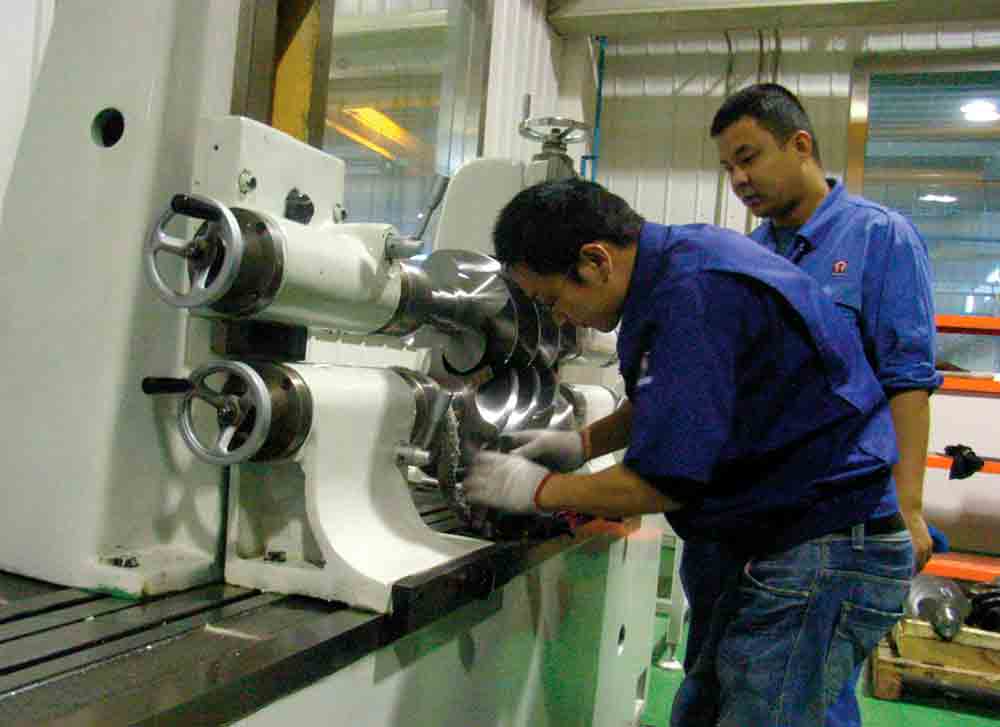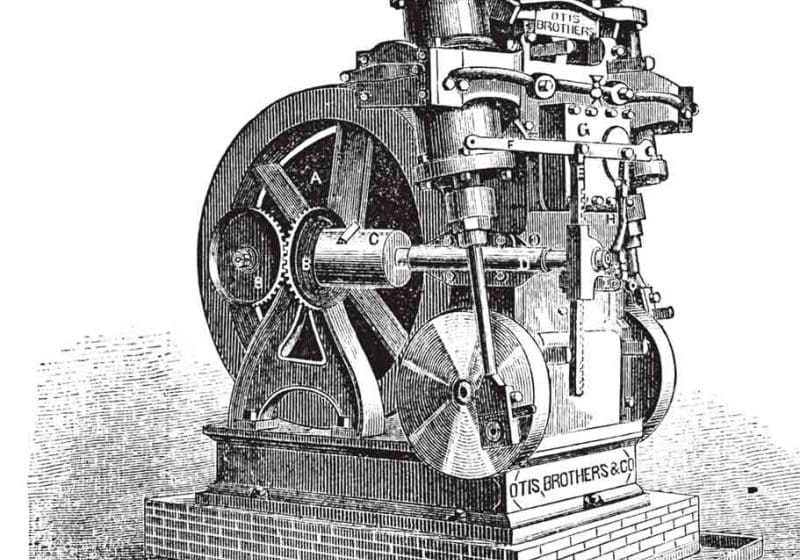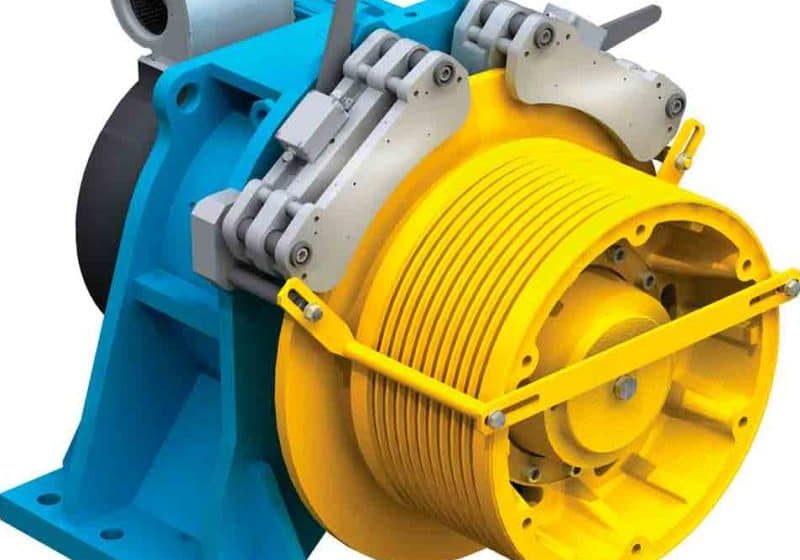More Responsibility for Passenger Safety: A Forum on Elevator Drive Safety
Mar 1, 2012

In November 2011, experts from the Chinese elevator industry attended a seminar hosted by Torin Drive, a provider of elevator traction machines.
On November 7, 2011, around 70 experts from the Chinese elevator industry gathered in Changshu, China, at the Changshu International Hotel to attend a seminar hosted by Torin Drive, a provider of elevator traction machines. The seminar focused on the developmental trends of the elevator drive system and was themed around the ideas of responsibility, mission, heritage and innovation. A panel of participants was comprised of Ma Peizhong, vice director of the National Elevator Inspection and Testing Center; Chen Fengwang, secretary general of the National Elevator Standardization Technical Committee; Li Shoulin, director of the Institute of Building Mechanization; Zhang He, chairman of Torin Drive’s board; He Yi, director of the Special Equipment Supervisory Bureau of Administration of Quality Supervision, Inspection and Quarantine; Li Zengjian, director of China Elevator; and Liu Xikui and Zhang Huaiji of the Shenzhen Inspection Institute. More than 10 other speakers addressed important industry issues at the seminar, which was presided over by Ju Minghui, managing director of Sales at Torin Drive.
The seminar began with welcoming remarks from Zhang He, who thanked everyone for their attendance. His statements made clear the goals of the seminar:
“Let us discuss [industry] safety and [environmental] issues in a light atmosphere, though they are hardly light issues. [The] elevator industry [has been] confronted with international economic difficulties and a series of accidents in China. What will the developmental trends of our industry be, and what must we do to regain market confidence? As one of the leading elevator traction machine manufacturers in China, I believe we should bear more responsibility and work harder.”
Recent elevator and escalator accidents in China resulting in casualties have brought attention to safety issues and raised alarm among the region’s vertical-transportation industry. While elevator and escalator manufacturers should increase product safety levels, there is a constant battle between costs and safety performance. Also, elevator component manufacturers should bear more responsibility to provide elevator and escalator manufacturers with safer and more reliable machines for installations utilizing their components. Torin Drive’s contribution to increased safety is the development of the PMG drive series for elevators and FT drive series for escalators. Both drives feature two independent brake units with emergency brakes that meet the safety requirements specified in the latest edition of ASME A17.1 and EN 81.
Speakers and participants discussed the role passenger safety plays for traction-machine manufacturers. Zhe He stated, “The price of rare-earth material [has soared] since last year, resulting in permanent-magnet synchronous (PMS) motors’ loss of competitiveness in the market.” With PMS machines currently comprising 60% of the market, He wonders if this will change.
He Yi explained that the industry faced a serious problem with elevator safety in 2011. During the first nine months of the year, statistics show an increase in deaths and injuries caused by elevator and escalator accidents. Meanwhile, the number of units in use has grown at an annual rate of 20% in China. People expect more from elevator safety as their quality of living improves; however, many possess little safety knowledge or common sense as safe riders. The media has brought the issue of elevator safety into focus. It is the responsibility of the industry to enhance public awareness of it. Effective measures have been taken to strengthen safety management, such as increasing users’ or building owners’ responsibility for safety, and establishing a safety and reliability commitment system for elevator manufacturers to get more involved with installation and maintenance, backed by a “responsibility insurance” for safety and quality to share risk in the event of an accident.
According to Li Shoulin, safety and reliability must be based on technical solutions, in which Torin Drive has made significant advances and successfully developed its new machine models with two separate brakes ready for market. The Chinese elevator industry has made steps in line with European and North American practices toward a higher level of safety. Torin Drive’s two independent brakes are key to improved safety levels. The first is the system brake, which operates during every slowdown or stop. The second functions as an emergency brake, activating only in the event of a system braking or mechanical transmission failure. It is important for the safety brake to function properly in a time of need due to its safety insurance feature. Therefore, it is necessary to test the brake one to two times each day, even without rope-slip or transmission problems. People need newer and safer equipment. Moreover, they need to know how to properly use it, something that must be made clear to users and maintenance mechanics.
Another topic covered at the seminar discussed the preservation of natural resources, specifically rare-earth metals. Though resources are limited, demand remains strong in a variety of industries, including the steel, automobile and railway sectors. In China, roughly 37% of explored resources were consumed over the past five years alone. Torin Drive has developed new traction machines that conserve these natural resources. According to some researchers, a substitute solution is now available. Research for applying switched reluctance motor drives (a motor-building technology) to elevators has been underway. However, the control mode in speed regulation differs greatly from the conventional drive control and stands as the final challenge.
Torin Drive’s Product Release
The next morning, some 200 people took part in the product unveiling ceremony. Zhang He’s opening speech welcomed the participants:
“Elevator and component manufacturers are close business partners depending on each others’ development and prosperity. . . . We regret to see the recent accidents that caused much public concern, from which we will both take lessons. We’ll do whatever we can for our partners and customers by providing traction machines that are safe, reliable and fieldwork-friendly enough to prevent accidents, helping to win back public confidence in the Chinese elevator industry. We’ve given priority to ensuring product reliability and passenger safety for elevator manufacturers with professional, innovative designs and dedicated workmanship.”
Ju Minghui spoke on Torin Drive’s developmental history and milestones. In 1985, the company produced its first traction machine. In 2001, production of PMS machines began, and the enterprise resource planning management system was introduced, which saw a total output of 3,630 machines, increasing to 78,000 by 2010. To ensure product quality, Torin Drive invested US$23.2 million in building its own casting capacities with lines from Germany; the first phase utilizing furan resin sand technology went into production in 2009. By the end of 2011, the casting capacity was expected to reach 40,000 T annually. With more than 600 customers and a widespread service network providing cross-continental technical support, the products have been designed to meet specific codes and standards in multiple countries and can be tailored to customer needs.
Gu Zhengming addressed the company’s quality-control system, Cao Jianwen focused on the PMG series for elevators, and Fang Wenna spoke about the FT series for escalators. Expectation and excitement filled the meeting hall as Zhang He and his guests unveiled the new machines. The speakers congratulated the company on the release of the new series of machines, expecting the safer, more efficient machines to contribute to both the Chinese and worldwide elevator industry.
The PMG traction machines feature an optimized combination of power transmission and drive technologies with up to 85% efficiency. Of the two independent brakes, the emergency brake acts upon the traction sheave directly to ensure protection against ascending car overspeed or unintended car movement, in conformity with ASME A17.1-2010/CSA B44-07, EN 81-1:1998+A3:2009 and GB 7588-2003. Meanwhile, the system brake has a compact design sufficient for slowdown and stopping operations during normal travels. PMG machines preserve resources, are lubricant free for 20,000 working hours and are energy efficient.
The design of FT traction machines is based on traditional technology, enhancing working efficiency by 80% or more when fully loaded and using an arc worm gear set. The underlying brake makes the escalator free from accidents caused by retrograde movement or unintended backward slip down of the step chain due to coupling or any other mechanical failures. The brake acting directly upon the worm shaft helps ensure passenger safety.
The design of the PMG 140/PMG 160 and FT 160 machines is based on the principle of safety, reliability and cost considerations. The new machine series equipped with operational and emergency brakes provides protection against the unintended movement of other elevator or escalator components and offers customers increased safety at no additional cost.
The Factory Tour
After a group photo of the attendees, visitors enjoyed a factory tour, which took them to both factory locations: one at 3rd Ring Road and one completed in 2010 on Suzhou Road.
Walking past neatly laid-out machines and testing facilities, your reporter met with Gu Zhengming, supervising director of Quality Control at Torin Drive. “I was here two years ago with a picture of a worm gear under testing. The gears look smooth and bright outside, what if there are tiny defects inside?” I asked. Gu Zhengming responded, “We have highly trained quality inspectors using special instruments to scan the inside metal structures of the work pieces, so we do not release a single component with a hint of potential flaws.” We both agreed that quality control is key to traction machines and passenger safety. Quality control guards against financial losses for the company, because, with certain customers, if as many as five machines are found to have the same defect, a batch return of goods and termination of the supply contract (something beyond the company’s financial tolerance) would follow. To some extent, the condition of the global market helps Gu Zhengming’s quality-control team in their efforts to improve systems and measures for strict and efficient quality control.
Get more of Elevator World. Sign up for our free e-newsletter.






